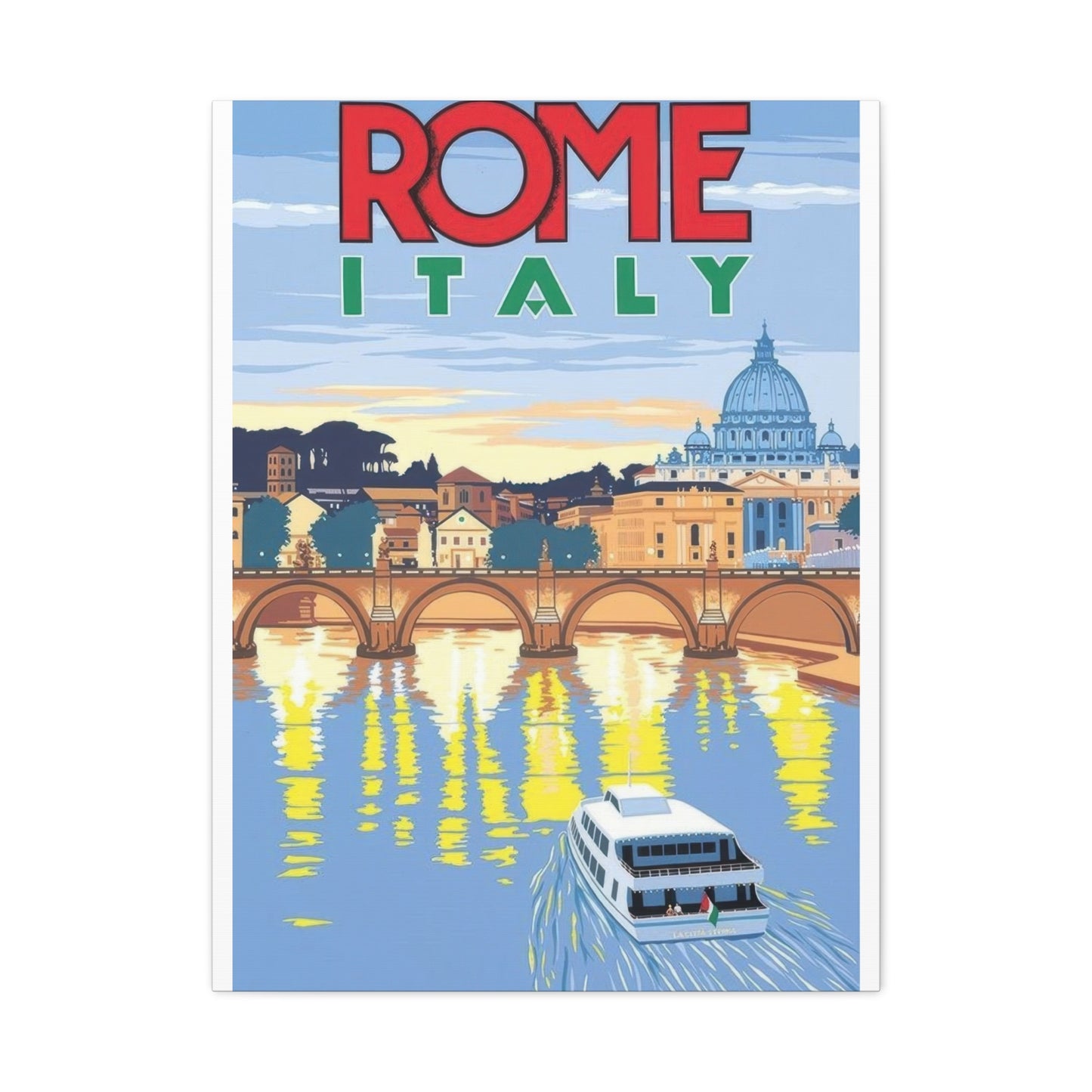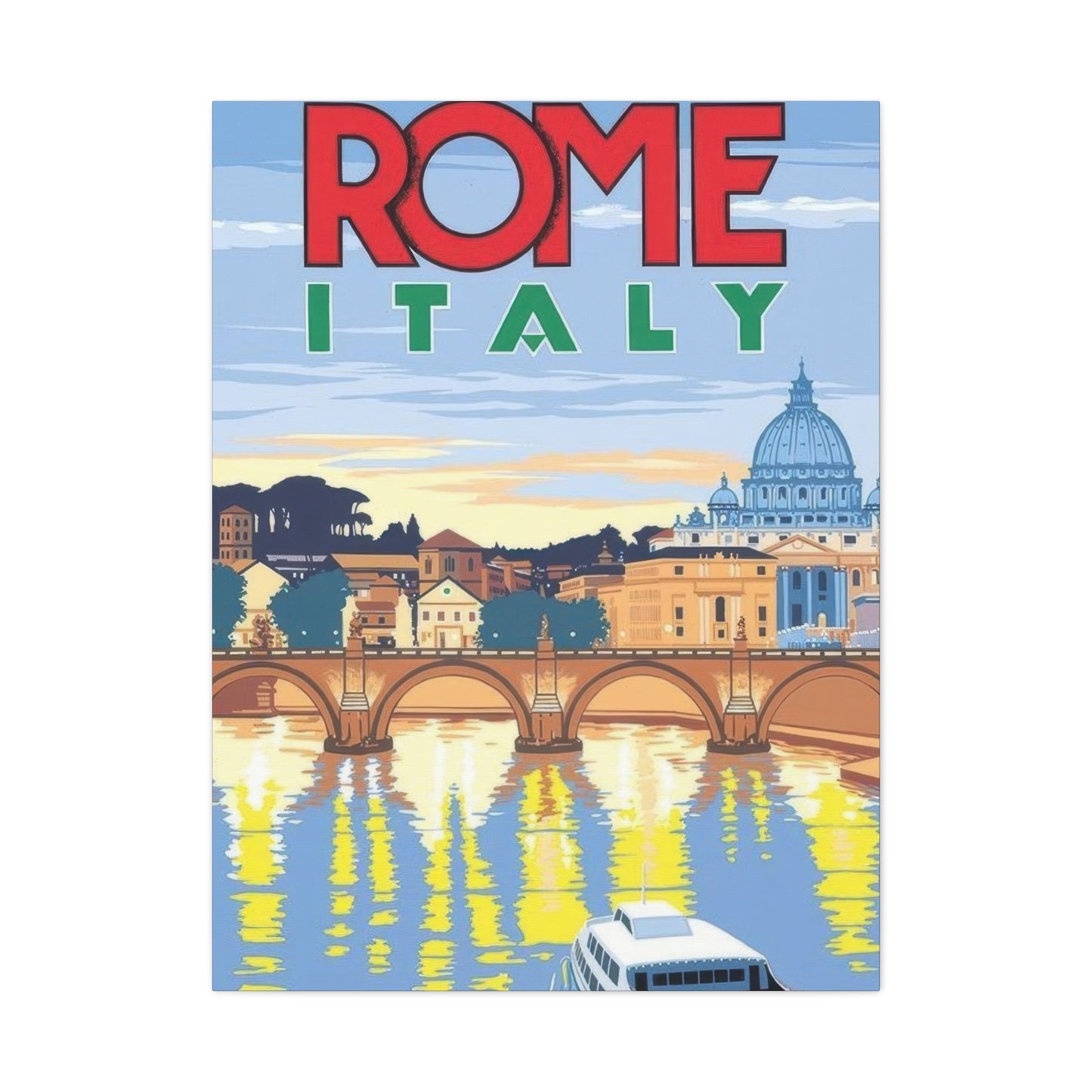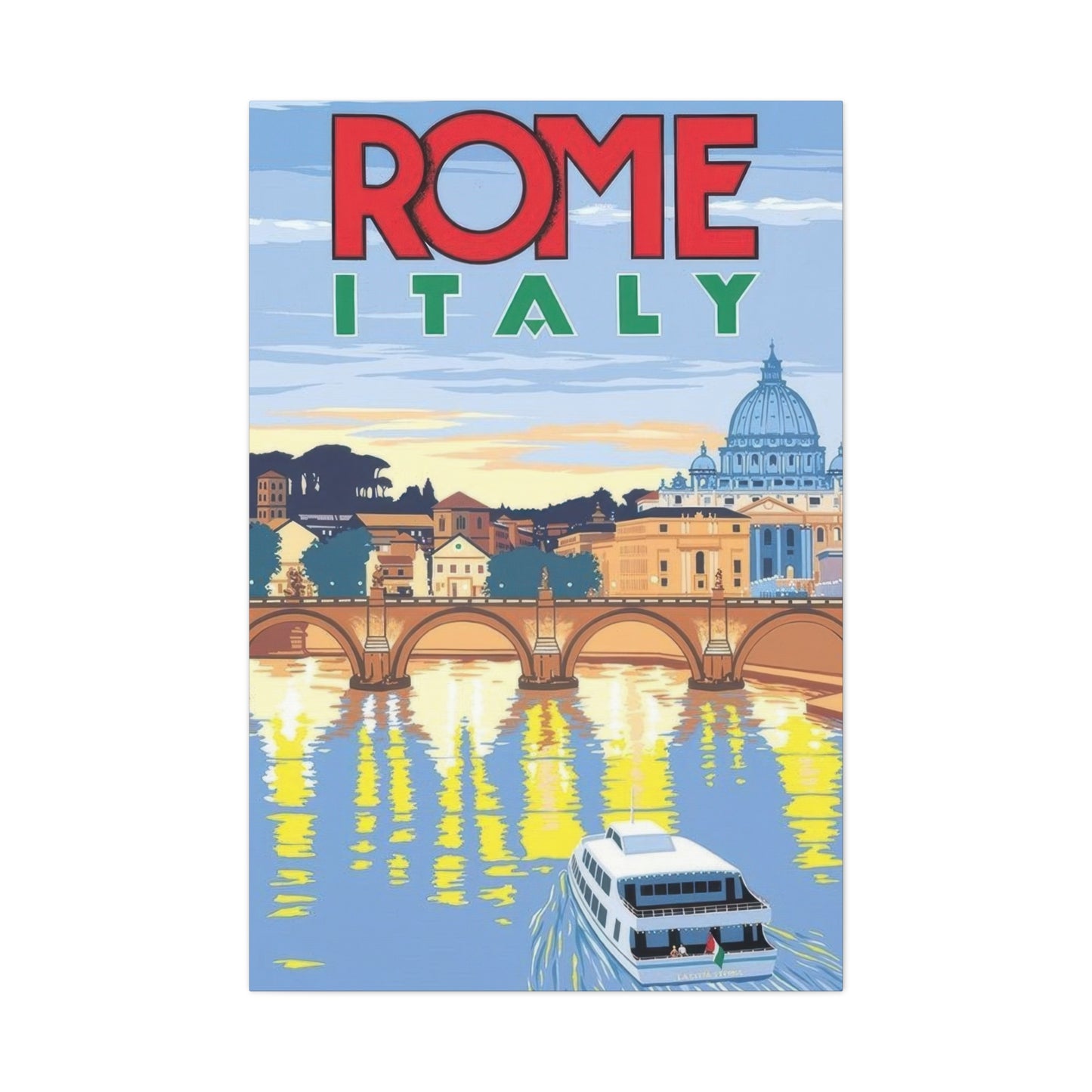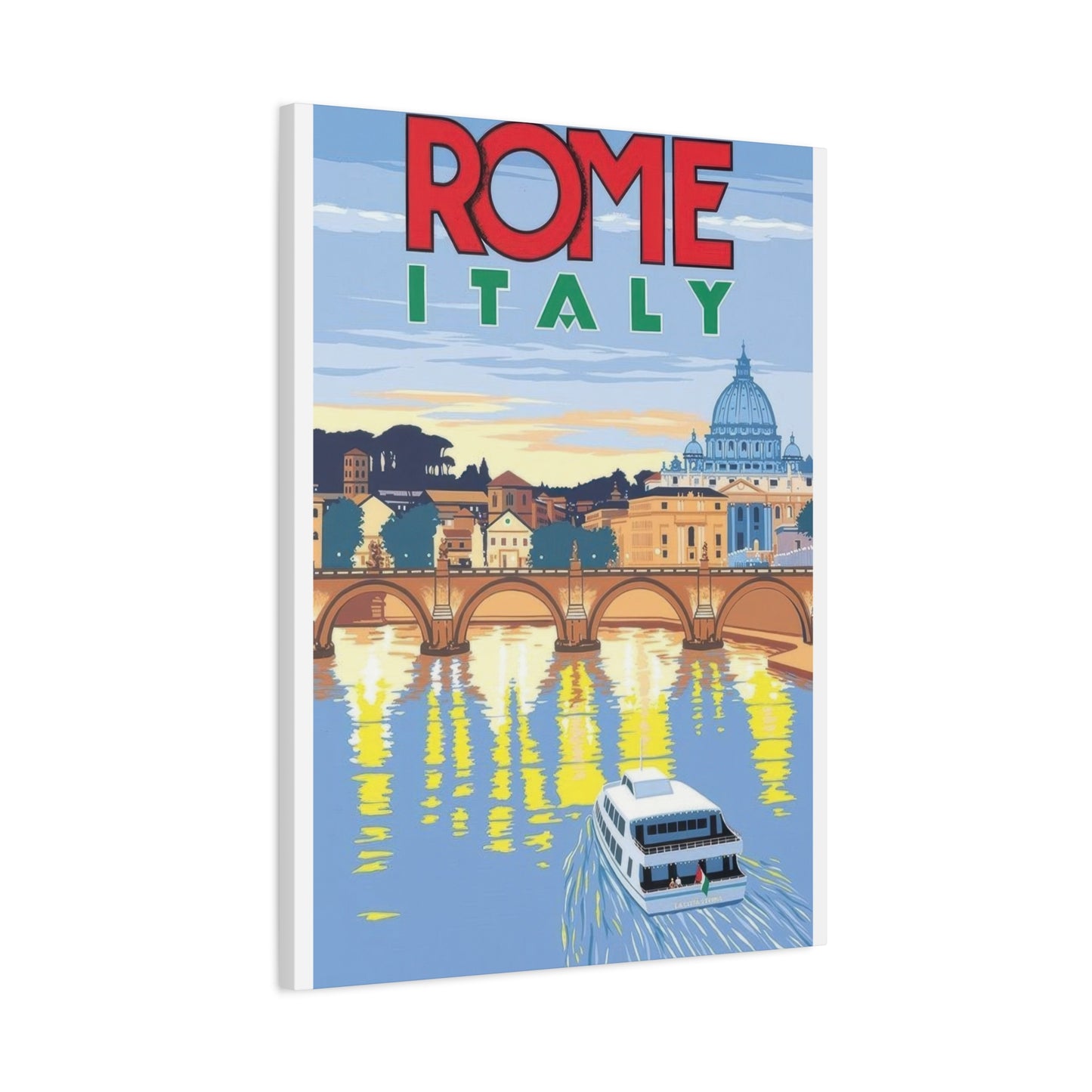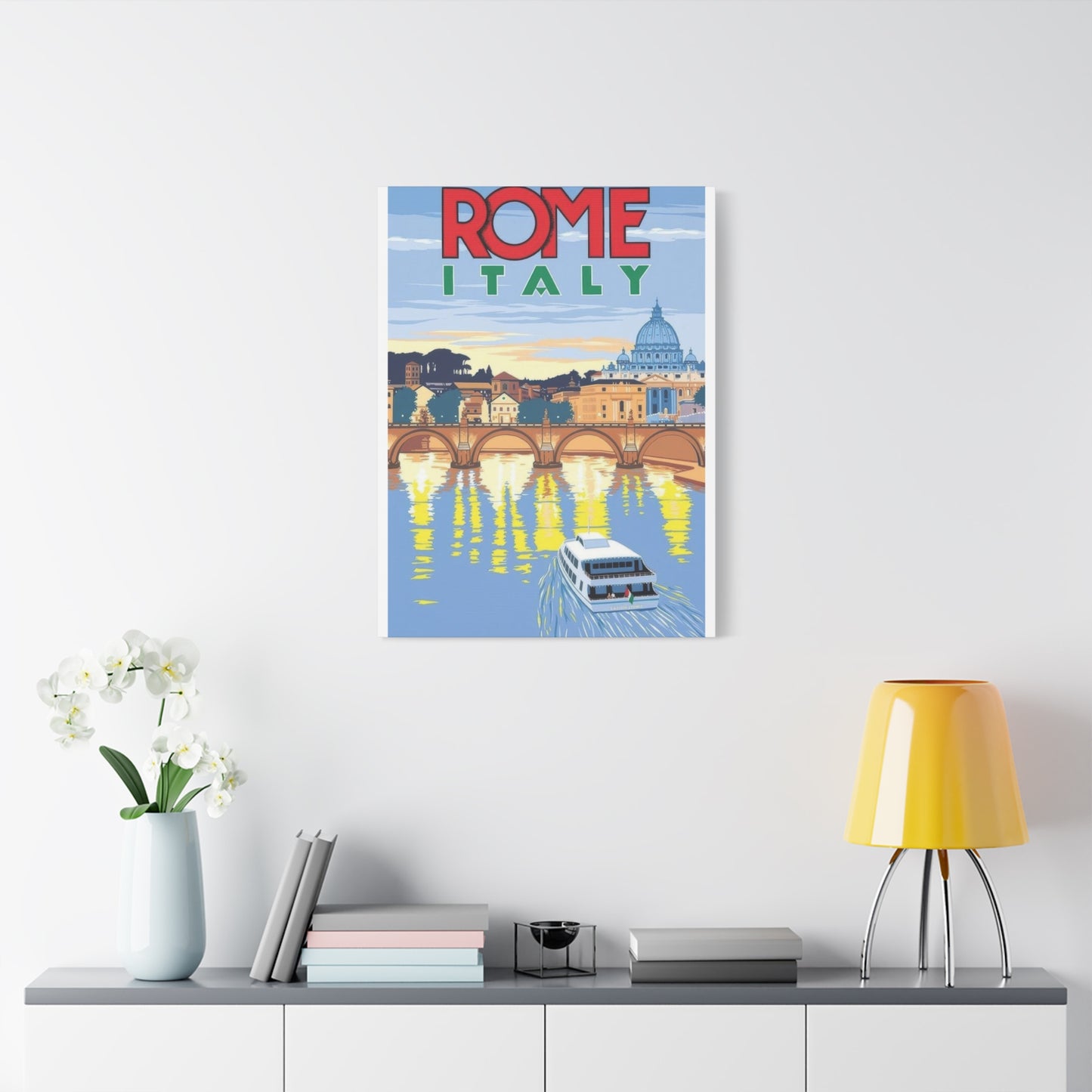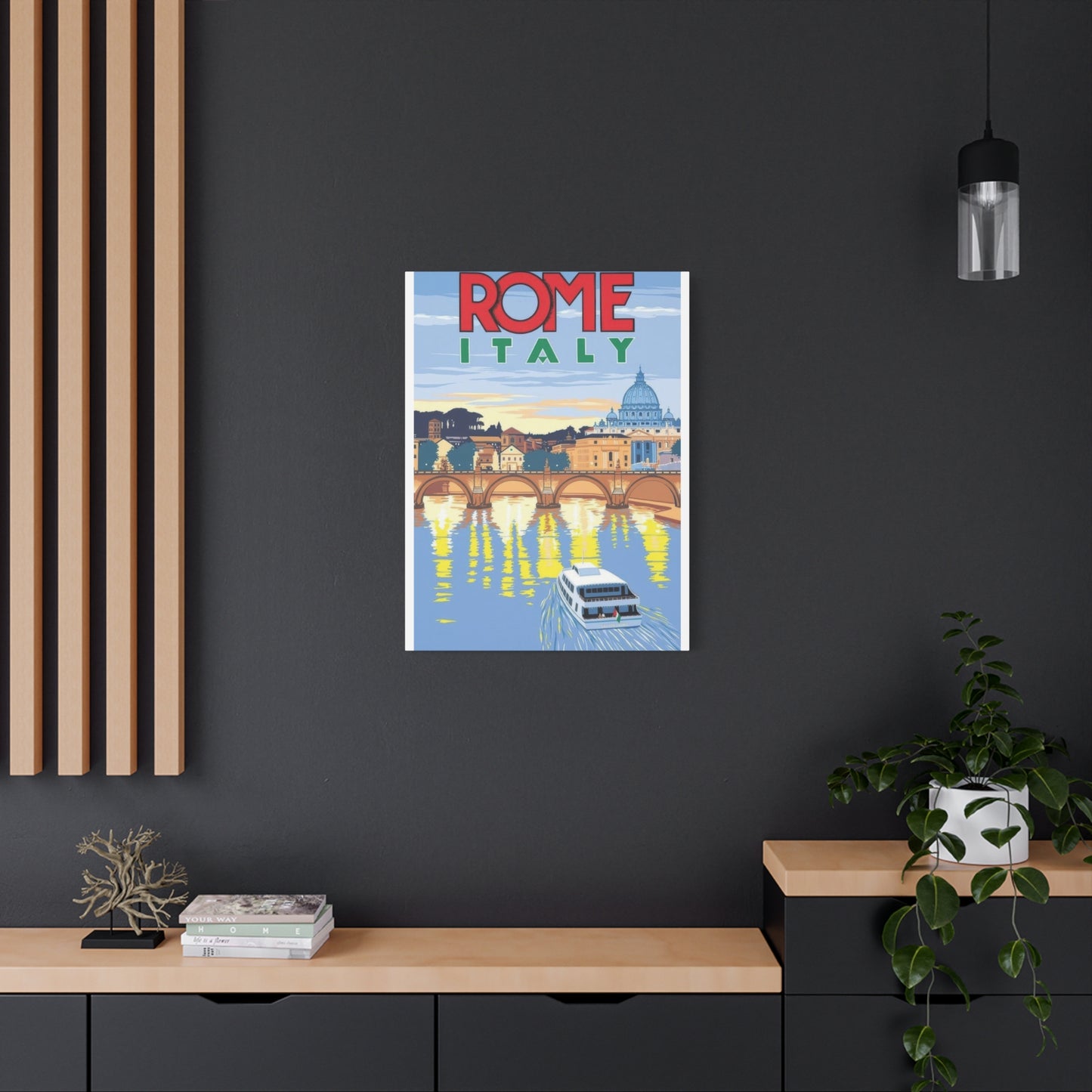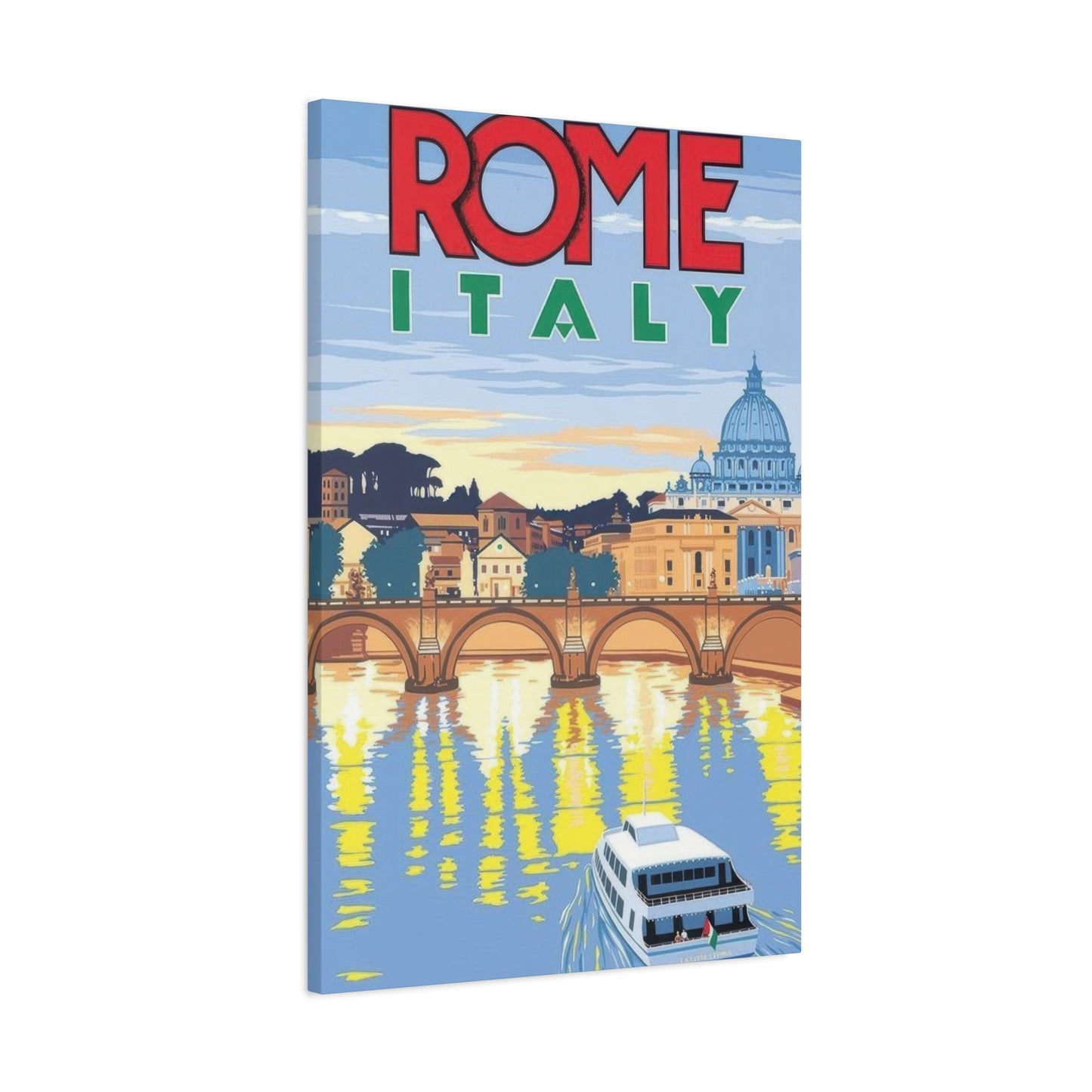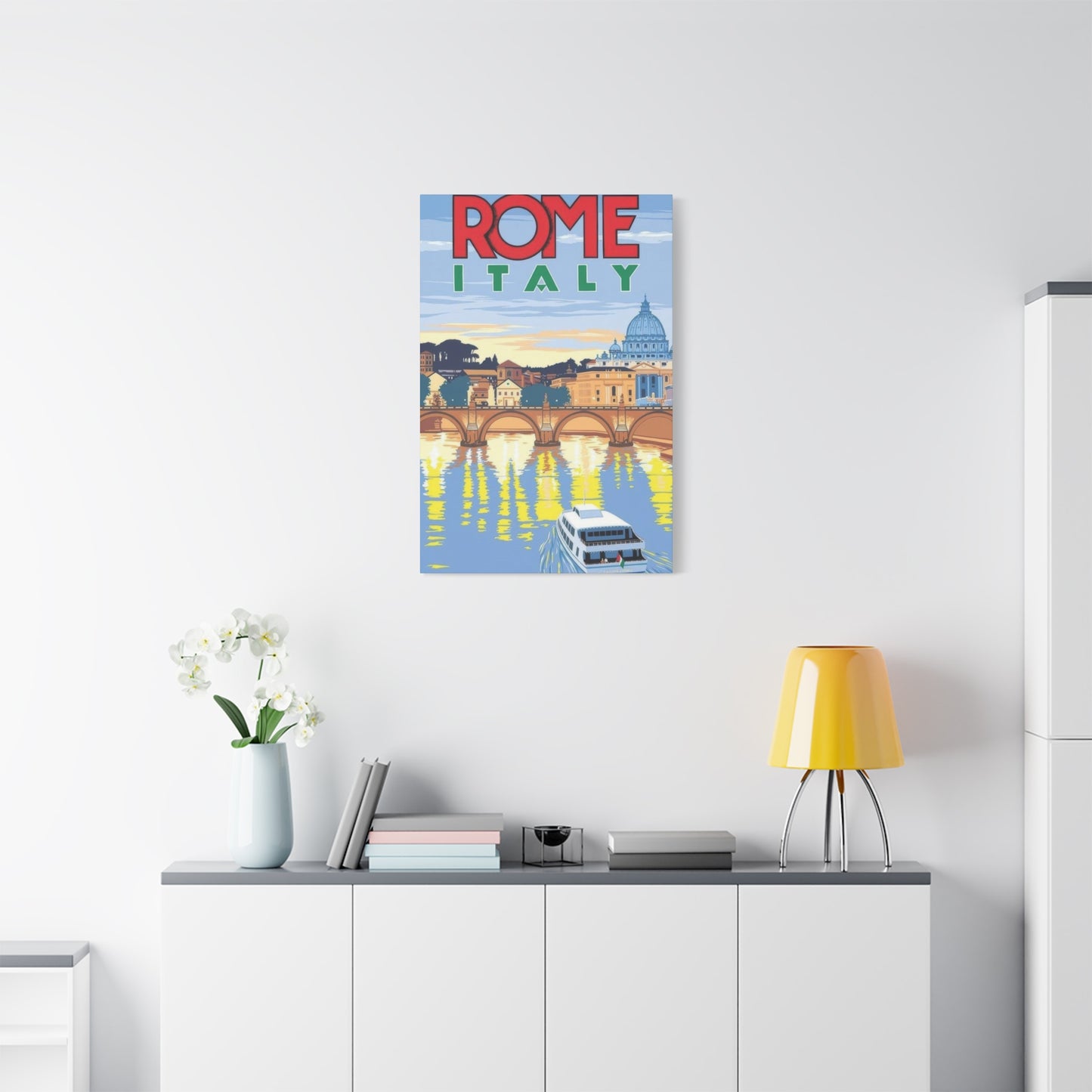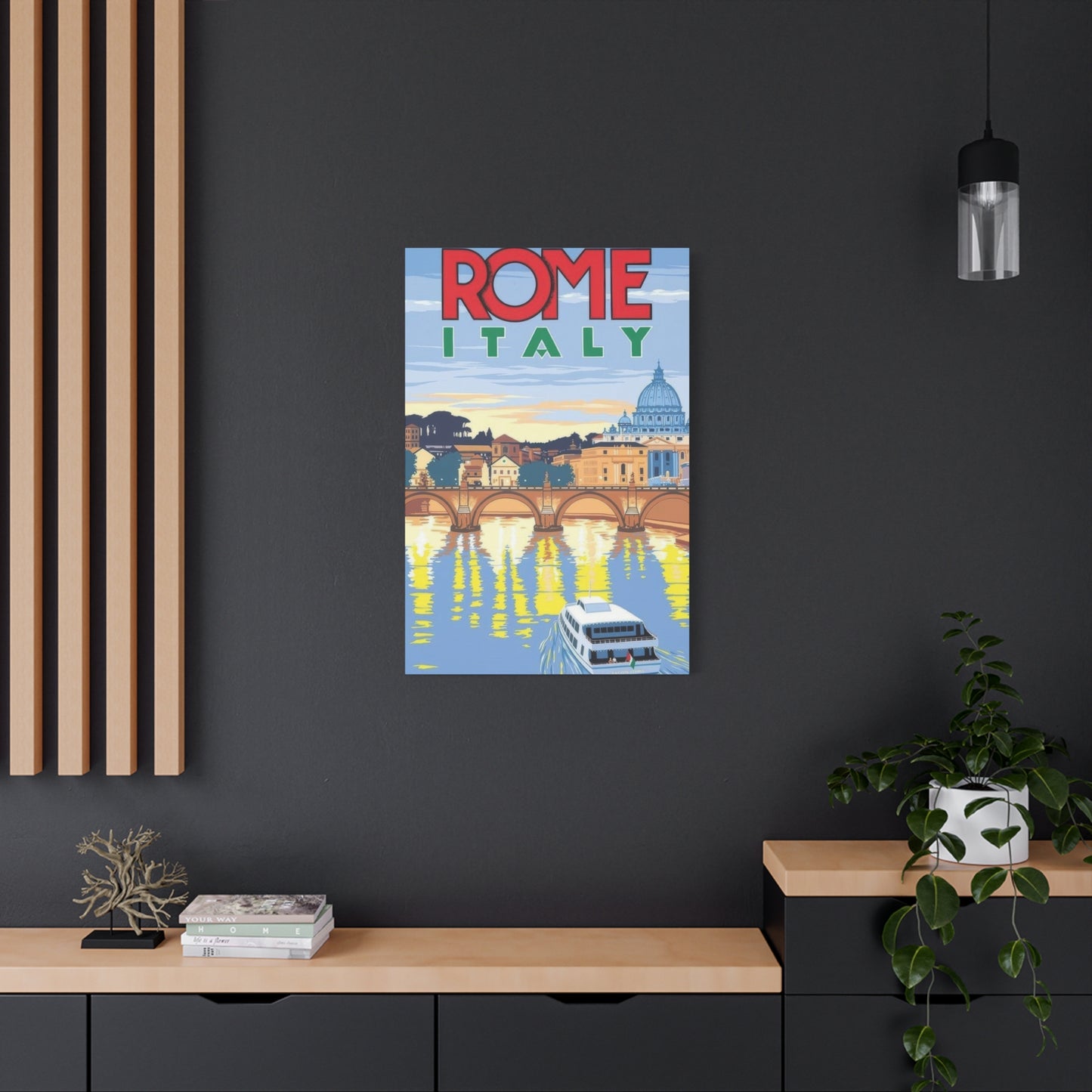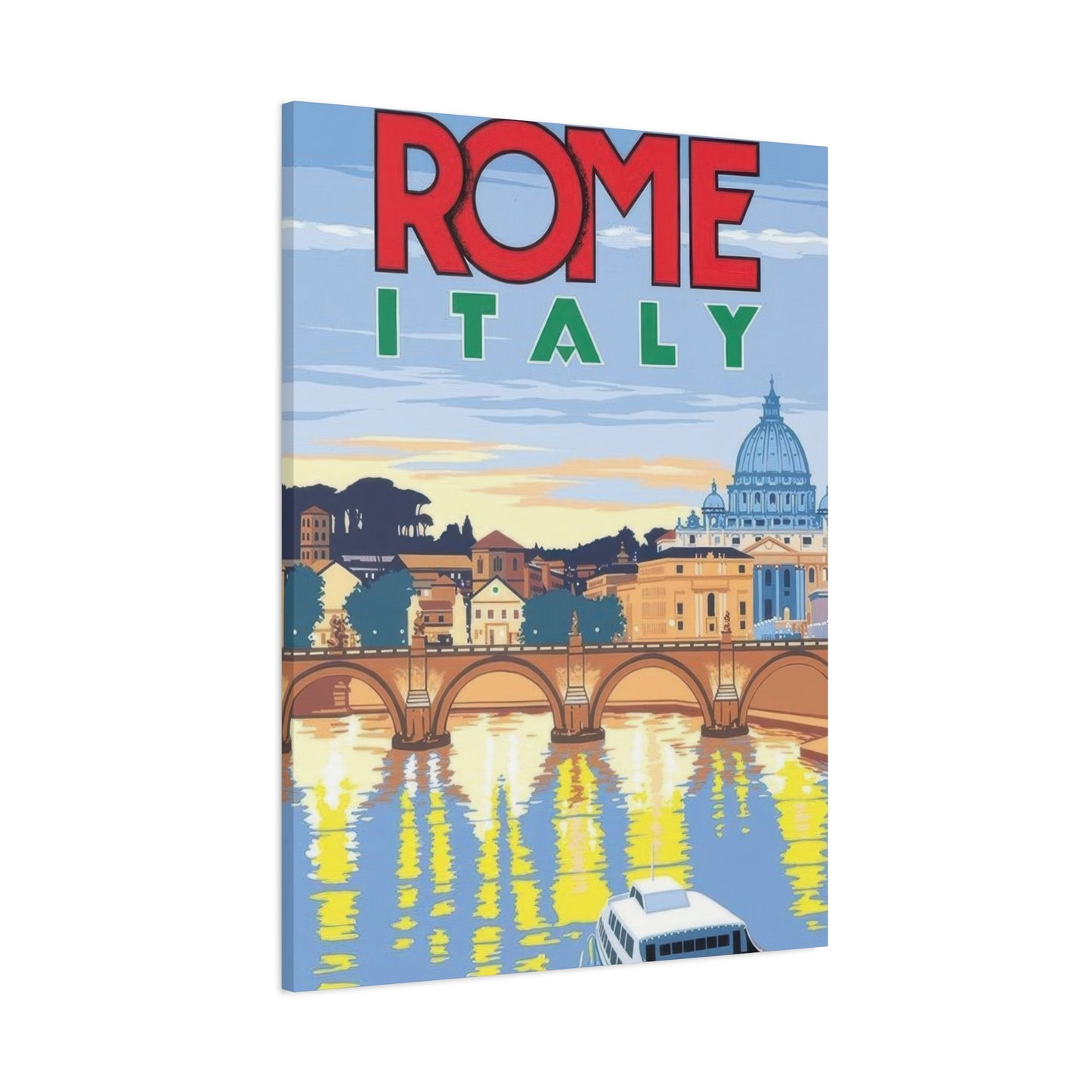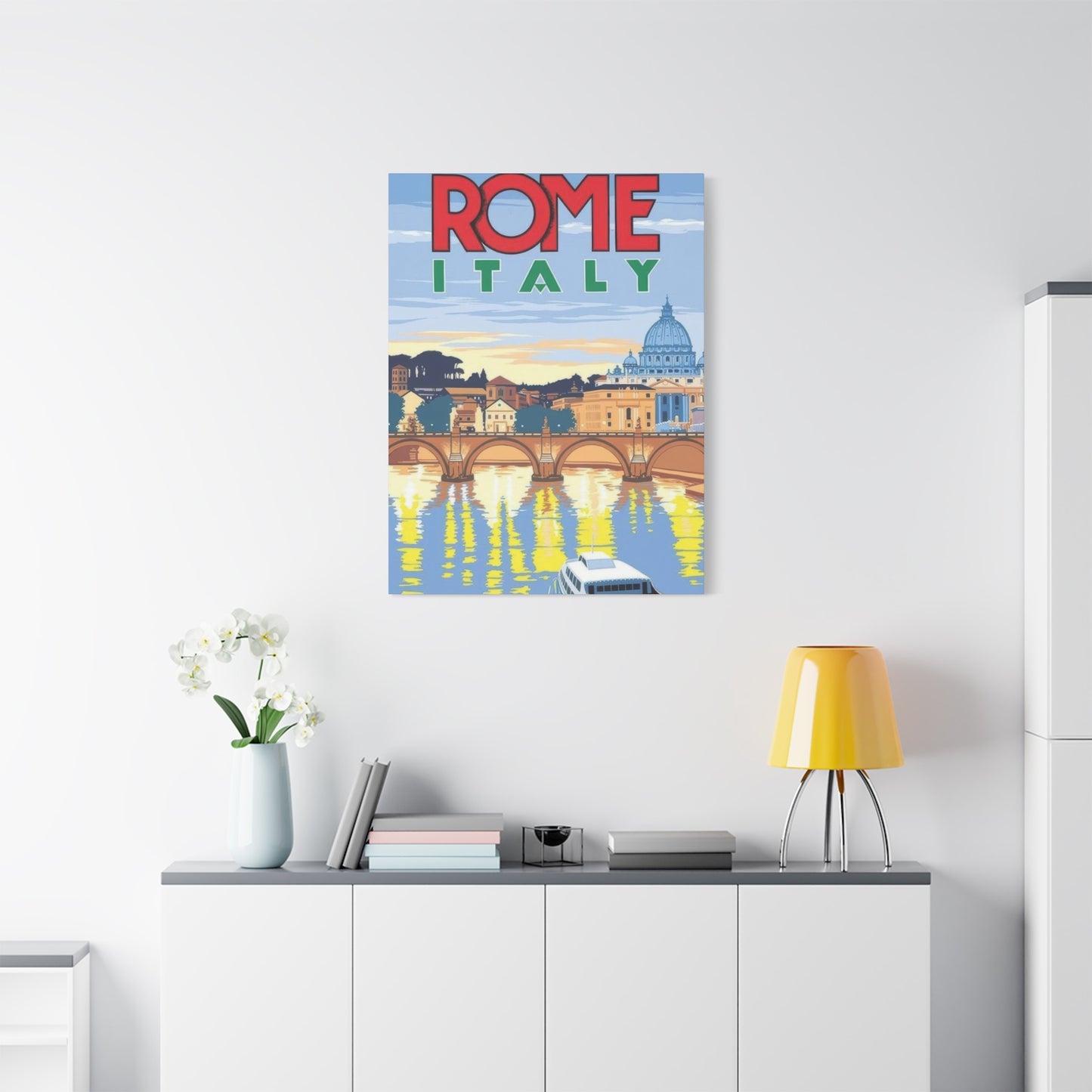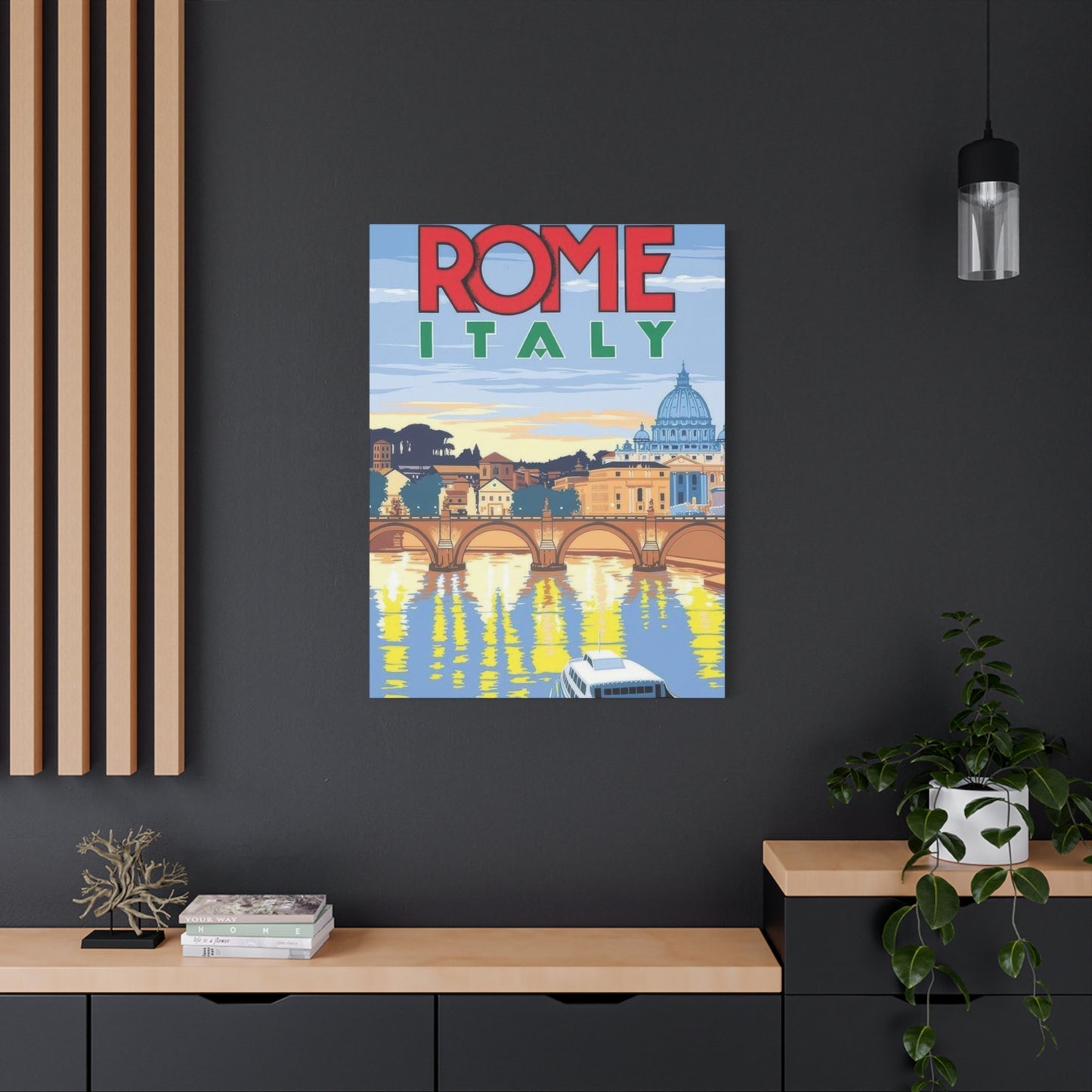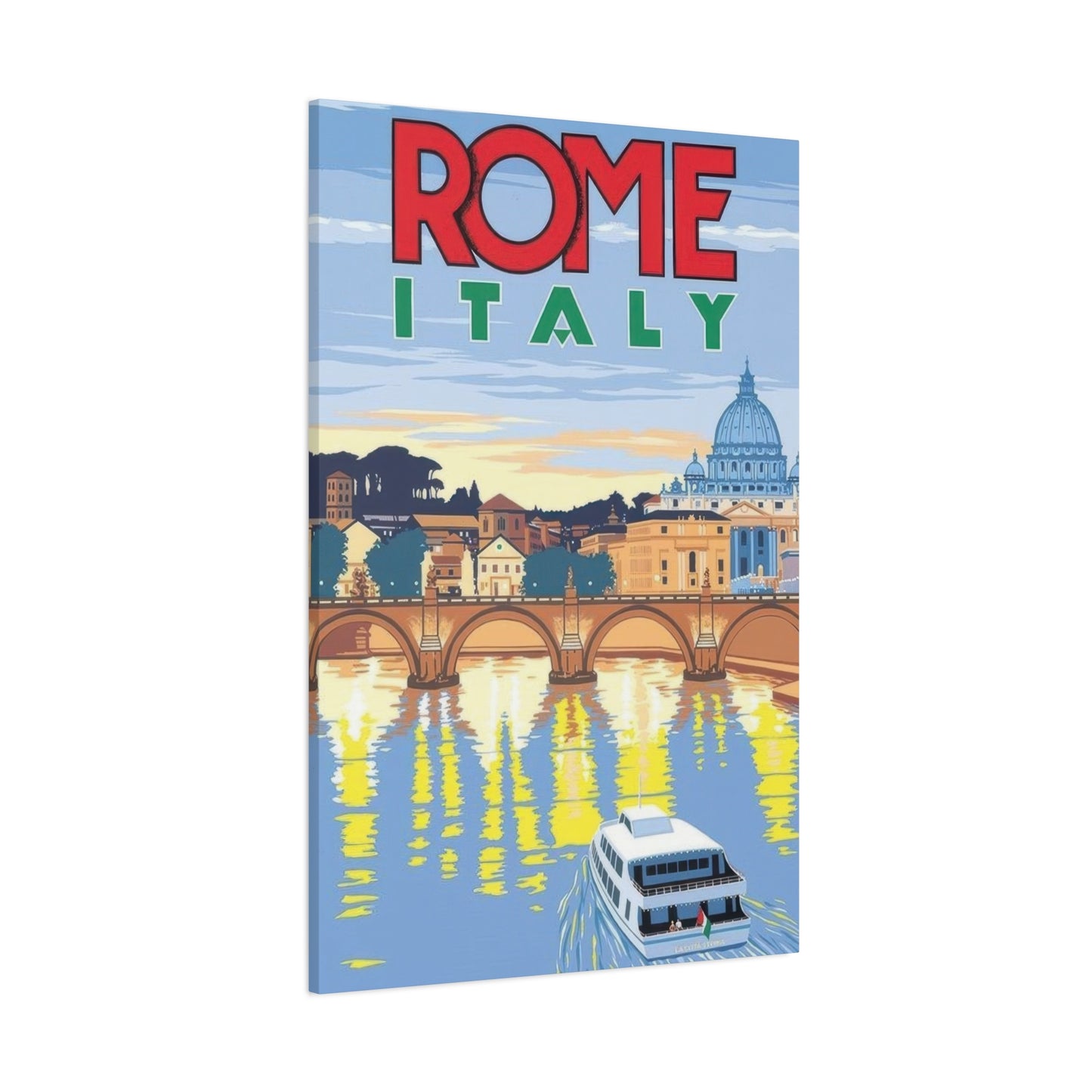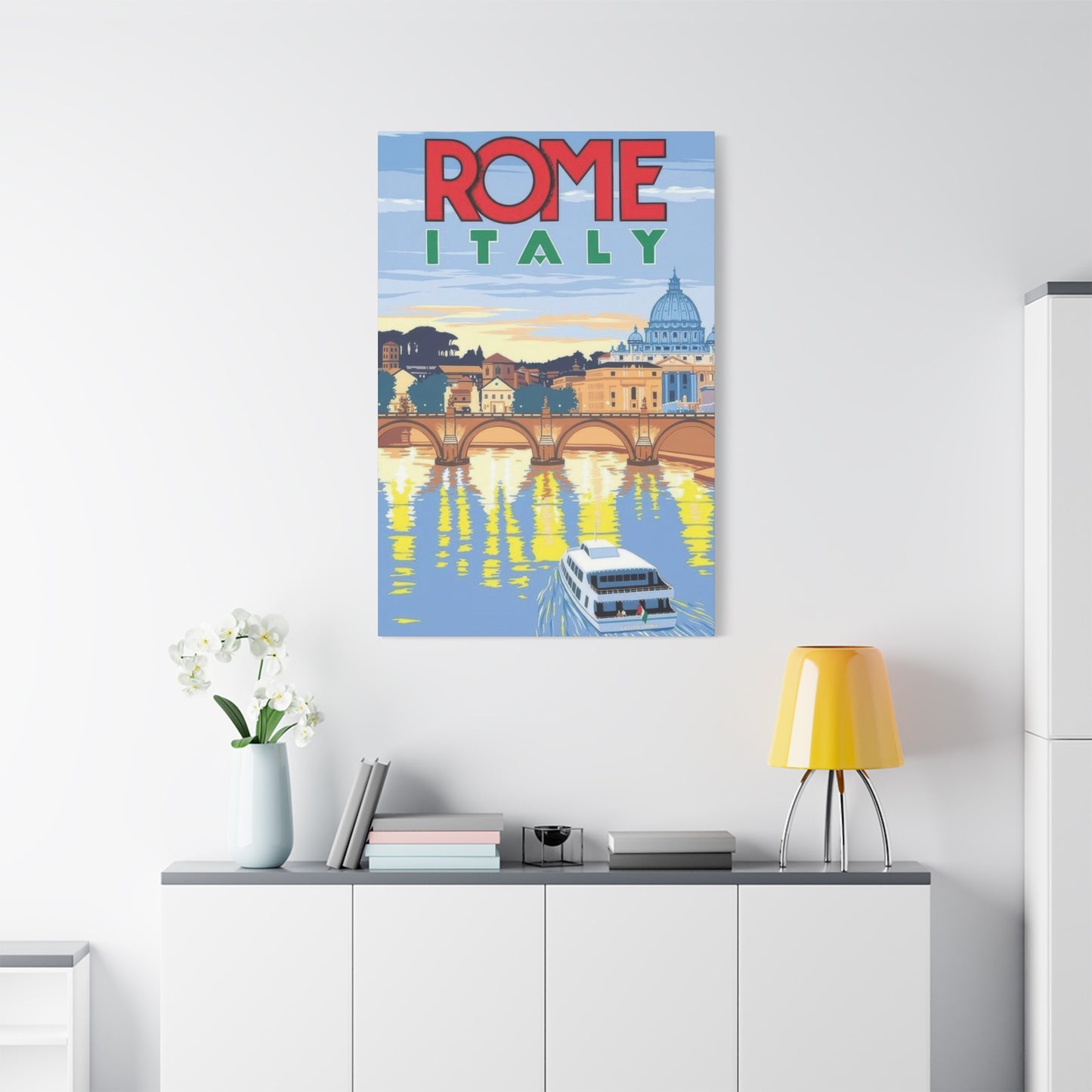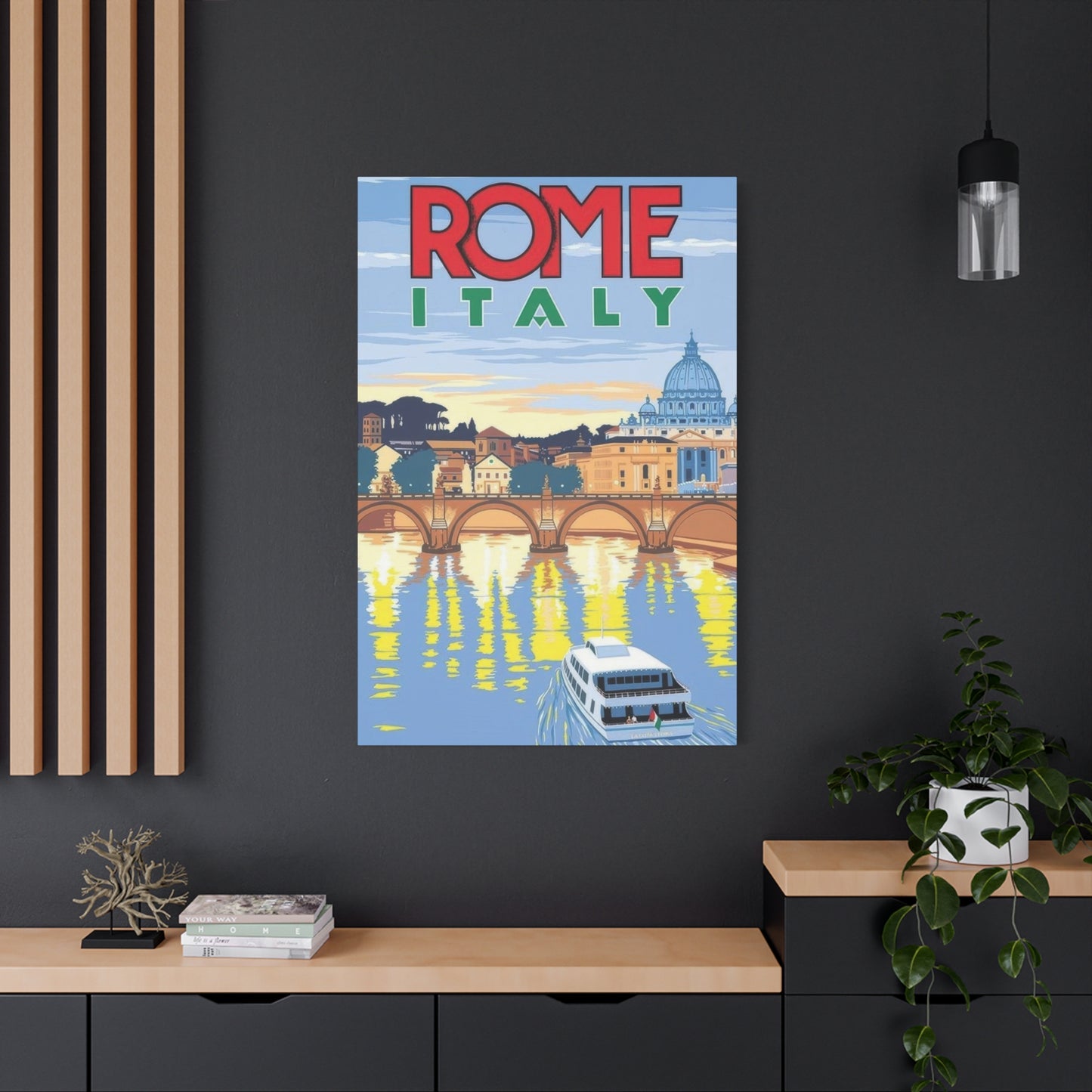Charles Avalon's Rome Italy Wall Art: A Journey Through Eternal City's Visual Poetry
The eternal magnificence of Italy's capital has inspired countless artists throughout history, yet few have captured its essence with the distinctive vision that Charles Avalon brings to his remarkable collection. Through his lens and brushstrokes, the ancient metropolis reveals itself in ways that resonate deeply with both seasoned travelers and those who dream of wandering its cobblestone pathways. His artistic interpretations transform everyday Roman vistas into extraordinary visual narratives that speak to the soul of this timeless destination.
Avalon's approach to depicting this historic capital goes beyond mere representation. Each piece in his collection serves as a portal into the heart of Italian life, where centuries-old structures stand alongside vibrant contemporary culture. His work captures not just the physical beauty of monuments and alleyways, but the intangible atmosphere that makes this city an enduring symbol of romance, history, and artistic excellence. The visual stories he creates through his artwork invite viewers to experience the magic of Italian urban landscapes from the comfort of their own homes.
What distinguishes Avalon's artistic vision is his ability to distill the complex character of this ancient metropolis into compositions that feel both authentic and dreamlike. His paintings and prints showcase the golden light filtering through narrow passages, the weathered textures of ancient stone, and the unexpected moments of beauty found in everyday Roman scenes. Through his careful attention to detail and masterful use of color and light, he creates pieces that transport viewers directly to the bustling piazzas, quiet side streets, and grand boulevards that define this remarkable city.
Daily Rhythms Captured in Avalon's Roman Visual Narratives
The pulse of Roman existence flows through Avalon's artwork with remarkable authenticity and energy. His depictions of daily life in the Italian capital reveal the authentic character of a city where ancient history meets contemporary vitality. Through his artistic interpretation, mundane moments transform into compelling visual stories that celebrate the unique rhythm of Mediterranean urban living. The way he captures residents going about their daily routines, café patrons enjoying their espresso, and vendors arranging their wares demonstrates his deep appreciation for the human element within the architectural grandeur.
His compositions frequently showcase the animated interactions that characterize Roman thoroughfares and gathering places. Market scenes burst with color and movement, displaying the vibrant exchanges between merchants and customers that have occurred in these locations for generations. The artist's eye captures the gestures, expressions, and postures that convey the warmth and spontaneity of Italian social culture. These visual narratives remind viewers that the true essence of this historic capital lies not only in its monuments but in the people who bring its streets to life each day.
Avalon's depictions of neighborhood scenes reveal his intimate knowledge of Roman districts beyond the typical tourist corridors. He portrays the quiet morning moments when shopkeepers open their shutters, the afternoon lull when sunlight bathes empty piazzas in golden warmth, and the evening bustle when locals emerge for their traditional passeggiata. His artwork captures the laundry hanging from balconies, the scooters parked at impossible angles, and the cats lounging on sun-warmed stone, all of which contribute to the authentic atmosphere of residential Roman life.
The artist's sensitivity to seasonal variations adds another dimension to his portrayals of urban existence. His winter scenes depict the city wrapped in soft gray light with fewer crowds navigating the streets, while summer compositions explode with brilliant sunshine and the energy of peak tourist season. Spring works showcase flower vendors and outdoor dining returning to the piazzas, and autumn pieces capture the mellow light and changing colors that transform the city's appearance. Through these seasonal variations, Avalon demonstrates how the experience of this ancient metropolis shifts throughout the year while maintaining its essential character.
His attention to the relationship between residents and their environment reveals the organic connection between Romans and their historic surroundings. The way people navigate narrow medieval lanes, pause to chat with neighbors beneath ancient arches, or rest in the shade of Renaissance fountains shows how contemporary life has adapted to fit within the framework of centuries-old urban planning. Avalon's artwork celebrates this harmonious coexistence of past and present, where modern residents inhabit spaces designed for entirely different purposes yet feel completely at home.
The artist also captures the timeless quality of certain Roman rituals and traditions. His depictions of Sunday gatherings, religious processions, and neighborhood festivals showcase how cultural practices endure despite the passage of time. These scenes connect viewers to the continuity of Italian culture, reminding them that some aspects of life in this historic capital remain remarkably consistent across generations. Through these visual narratives, Avalon honors both the evolution and preservation of Roman customs and social patterns.
Vibrant Palettes Defining Avalon's Italian Capital Compositions
The chromatic choices Charles Avalon employs in his Roman artwork reveal his sophisticated approach to color theory and his deep sensitivity to the unique luminosity of Mediterranean environments. His palette captures the warm ochres, terracotta reds, and sun-bleached yellows that characterize the city's architectural surfaces, creating compositions that immediately evoke the visual atmosphere of Italian urban landscapes. These earth tones form the foundation of his work, grounding his compositions in the authentic color language of Roman buildings and streets.
Avalon's handling of color extends beyond simple representation to explore the emotional and atmospheric qualities that hues can convey. His use of warm golden tones suggests the special quality of afternoon light that bathes the city in a magical glow, while cooler blues and grays in shadow areas create depth and dimensional contrast. The interplay between warm and cool tones throughout his compositions generates visual interest while accurately reflecting the complex lighting conditions found in the narrow streets and open piazzas of the Italian capital.
The artist demonstrates particular skill in rendering the subtle color variations found in weathered stone and aged plaster surfaces. Rather than depicting buildings as monochromatic masses, he reveals the complex tapestry of hues created by centuries of exposure to sun, rain, and human habitation. Walls that might appear uniformly beige from a distance reveal themselves in his artwork as intricate mosaics of peach, cream, gold, and rose tones. This attention to chromatic nuance brings authenticity and visual richness to his architectural depictions.
Avalon's color selections also effectively convey different times of day and atmospheric conditions. Morning scenes feature fresh, clear colors with crisp contrasts between light and shadow areas. His midday compositions often employ lighter, more luminous hues that capture the intensity of Mediterranean sunshine. Evening works showcase the warm, glowing colors of golden hour, when everything seems bathed in honeyed light. Overcast day pieces demonstrate his ability to work with a more limited, subdued palette while maintaining visual interest and atmospheric quality.
The inclusion of accent colors adds vitality and focal points throughout his compositions. Bright geraniums spilling from window boxes, colorful awnings shading café tables, and the varied clothing of pedestrians provide splashes of intense color against the neutral architectural backdrop. These chromatic punctuation marks guide the viewer's eye through the composition while celebrating the lively, colorful character of Mediterranean culture. The artist carefully balances these bright accents with the overall color harmony, ensuring they enhance rather than overwhelm the composition.
His treatment of shadows demonstrates sophisticated color knowledge, as he avoids the use of flat black or gray for shadow areas. Instead, Avalon fills his shadows with rich, complex colors that suggest reflected light and atmospheric perspective. Blues, purples, and deep greens appear in shadow passages, creating luminous darks that maintain visual interest and contribute to the overall color harmony. This approach results in compositions where even the darkest areas feel alive and integral to the overall chromatic structure.
The artist's seasonal color variations add another layer of interest to his body of work depicting the Italian capital. Summer pieces burst with saturated, intense hues reflecting the brilliant light and lush vegetation of warm months. Autumn works incorporate warmer golds and browns alongside the persistent earth tones of the architecture. Winter compositions often feature cooler, more muted palettes with subtle grays and soft pastels. Spring paintings celebrate renewal with fresh greens and the bright colors of blooming flowers appearing throughout the urban landscape.
Avalon's Creative Approach: Merging Historical and Contemporary Roman Elements
Charles Avalon's distinctive artistic methodology creates a fascinating dialogue between different temporal layers of the Italian capital. His work acknowledges the city's extraordinary historical legacy while simultaneously capturing the energy and character of modern metropolitan life. This temporal fusion appears throughout his compositions, where ancient columns frame views of contemporary street scenes, or where modern café culture unfolds against backdrops of Renaissance architecture. The result is artwork that honors tradition while embracing the living, breathing reality of a constantly evolving urban environment.
The artist's technique involves careful compositional choices that highlight the juxtaposition between old and new elements. He might position a modern scooter beside an ancient fountain, or capture contemporary residents chatting on mobile phones while leaning against walls built during the imperial era. These deliberate pairings remind viewers that the Italian capital is not a museum frozen in time but a dynamic city where history provides the setting for contemporary existence. His artwork celebrates this unique characteristic that sets this particular metropolis apart from other historic European cities.
Avalon's treatment of architectural subjects demonstrates his appreciation for how different historical periods coexist within the urban fabric. His compositions might include elements from classical antiquity, medieval fortifications, baroque churches, and modern buildings all within a single frame. Rather than focusing exclusively on any one period, he embraces the architectural layering that characterizes the cityscape. This approach reflects the actual experience of moving through Roman districts, where structures from vastly different eras stand side by side, creating a unique aesthetic that results from millennia of continuous habitation.
The artist's handling of contemporary elements within historic settings shows particular sensitivity and skill. Modern signage, vehicles, street furniture, and other current-day objects appear in his work without diminishing the timeless quality of his compositions. He achieves this balance through careful attention to scale, placement, and emphasis, ensuring that contemporary details add authenticity without dominating the scene. This nuanced approach allows his artwork to feel both historically informed and immediately relevant to modern viewers.
His color and lighting choices further reinforce the synthesis of old and new in his artistic vision. The warm, golden illumination that appears throughout his work suggests both the enduring beauty of ancient stone and the inviting atmosphere of contemporary Mediterranean life. Shadows cast by centuries-old structures create patterns on modern sidewalks, while contemporary street lamps illuminate historic façades at night. These lighting effects emphasize the continuity between past and present, showing how the same fundamental elements of light and shadow have shaped the visual experience of this city across different eras.
Avalon also captures the way modern Romans have adapted historic structures for contemporary purposes. His artwork depicts restaurants operating within medieval buildings, boutiques occupying Renaissance palazzos, and apartments carved from structures built for entirely different functions centuries ago. These adaptive reuse scenarios illustrate the practical creativity of Italian urban culture, where preservation and progress find harmonious accommodation. The artist's depictions of these transformed buildings celebrate this pragmatic approach to heritage conservation that allows historic structures to remain vital parts of daily life.
The artist's work also reflects an awareness of how contemporary art and culture have added new layers to the historic urban environment. His compositions sometimes include modern sculptures in ancient piazzas, street art adorning old walls, or contemporary architectural interventions within historic districts. By incorporating these elements, Avalon acknowledges that the city's artistic heritage continues to evolve and that each generation adds its own creative contributions to the accumulated cultural wealth of this remarkable place.
Ideal Settings for Presenting Avalon's Roman Visual Collections
The versatility of Charles Avalon's Italian capital artwork makes it suitable for numerous residential and commercial environments, each benefiting from the sophisticated beauty and cultural richness his pieces provide. When considering placement options, the key lies in recognizing how his compositions can enhance different settings while maintaining their visual impact and thematic resonance. The right location allows the artwork to communicate effectively with viewers while complementing the existing aesthetic character of the environment.
Living areas represent ideal locations for displaying Avalon's larger, more dramatic compositions. These gathering locations benefit from artwork that serves as both visual focal point and conversation catalyst. A substantial piece depicting a famous piazza or dramatic architectural vista can anchor the room's design while introducing sophisticated European elegance. The warm earth tones characteristic of his Roman works harmonize beautifully with various decorative approaches, from traditional to contemporary, making them remarkably adaptable to different stylistic contexts.
Dining areas offer another excellent venue for his artwork, as these locations often celebrate conviviality, culture, and the pleasures of good food and company. The connection between Italian culture and culinary excellence makes Roman-themed artwork particularly appropriate for eating areas. Compositions featuring café scenes, market stalls, or charming trattorias establish an appetizing atmosphere while reinforcing the Mediterranean appreciation for leisurely meals and social dining. The visual warmth of Avalon's work enhances the inviting character essential to successful dining environments.
Personal retreats and private chambers can accommodate more intimate, contemplative pieces from Avalon's collection. Quieter compositions depicting secluded courtyards, residential side streets, or peaceful early morning scenes create tranquil atmospheres conducive to rest and reflection. These more subdued works bring the romantic, dreamy quality of Italian urban landscapes into personal sanctuaries without overwhelming the restful character these locations require. The soothing color palettes and gentle lighting in many of his pieces support relaxation and mental calm.
Home offices and creative workrooms benefit from Avalon's artwork in ways that support both productivity and inspiration. His depictions of the Italian capital can remind remote workers of broader horizons beyond their immediate task list while providing visual interest during breaks from screen time. The cultural sophistication and artistic excellence evident in his work create an elevated atmosphere that can enhance professional credibility during video conferences. Additionally, for creative professionals, his compositions offer endless inspiration through their masterful handling of composition, color, and light.
Entryways and corridors present opportunities to make strong first impressions with Avalon's dramatic compositions. These transitional areas often have wall availability that accommodates artwork without competing with furniture or other functional elements. A striking piece featuring iconic Roman architecture or a vibrant street scene immediately establishes a tone of cultured sophistication while offering visual interest to areas that might otherwise feel utilitarian. The corridor or hallway gallery approach, featuring multiple related works from his collection, can create an immersive experience as one moves through the dwelling.
Commercial establishments, particularly those in hospitality, travel, or cultural sectors, find natural alignment with Avalon's Roman artwork. Hotels and bed-and-breakfasts can use his pieces to establish sophisticated, cosmopolitan atmospheres while connecting guests to the romance of European travel. Restaurants, especially those serving Italian cuisine, benefit from the authentic ambiance his artwork provides, reinforcing their culinary theme through visual storytelling. Travel agencies and tour operators can use his work to inspire wanderlust and showcase the destinations they represent.
Professional offices in law, finance, and consulting can leverage the cultured sophistication of Avalon's artwork to enhance their client-facing areas. The timeless quality and artistic excellence of his pieces communicate stability, heritage, and refined taste without appearing overly formal or intimidating. The absence of overtly commercial or trendy elements in his work ensures that these pieces remain appropriate and impressive over extended timeframes, providing lasting value to professional environments that require enduring aesthetic solutions.
Italian Cultural Heritage Reflected in Avalon's Creative Output
The deep influence of Italian traditions, values, and lifestyle permeates every aspect of Charles Avalon's artistic work focused on the eternal city. His compositions reflect not just the physical appearance of Roman environments but the cultural attitudes and social patterns that define Italian life. The emphasis on beauty in everyday contexts, the importance of public gathering locations, and the seamless integration of artistic heritage into contemporary existence all emerge clearly through his visual narratives.
Avalon's work demonstrates particular sensitivity to the Italian concept of "la dolce vita" or the sweet life, which celebrates pleasure, beauty, and the art of living well. His depictions of café culture, leisurely strolls, and social gatherings in public locations capture this philosophical approach to daily existence. Rather than depicting frenetic activity or commercial hustle, his compositions often showcase moments of pause, conversation, and appreciation of surroundings. This emphasis aligns with Italian values that prioritize quality of life, social connection, and sensory pleasure over purely material or productivity-focused concerns.
The artist's treatment of communal locations reflects the distinctly Italian emphasis on public life and social interaction. Piazzas function as outdoor living rooms in Italian culture, and Avalon's depictions capture how these open areas facilitate community cohesion. His scenes show how public fountains, benches, and café tables become stages for the daily theater of social life. The importance of these gathering locations in Italian culture, where people of all ages mix freely and public interaction forms an essential component of wellbeing, appears throughout his body of work.
Avalon's attention to architectural detail and preservation reflects Italian cultural attitudes toward heritage conservation. The careful maintenance of historic structures, the pride in artistic legacy, and the integration of ancient monuments into contemporary life all characterize Italian approaches to the past. His artwork celebrates this preservation ethic, showing how Italians have protected their inherited treasures while adapting them for modern purposes. The respect for craftsmanship evident in his rendering of architectural details mirrors the Italian appreciation for skilled artisanship across all domains.
His compositions also capture the Italian flair for aesthetic presentation evident in everything from personal grooming to product displays. The attention to visual beauty in everyday contexts, whether in the arrangement of produce at a market stall or the styling of a simple café table, reflects deep cultural values. Italians bring an artistic sensibility to mundane activities, transforming routine tasks into opportunities for aesthetic expression. Avalon's eye for these details and his inclusion of them in his artwork demonstrates his appreciation for this distinctive cultural characteristic.
The seasonal rhythms and traditional celebrations that structure Italian cultural life appear throughout Avalon's work. His depictions of religious processions, street festivals, and holiday decorations showcase how tradition remains vital in contemporary Italian society. These cultural practices, passed down through generations, create continuity between past and present while reinforcing community bonds. The artist's inclusion of these elements acknowledges their importance in maintaining cultural identity and social cohesion within Italian communities.
Avalon's work also reflects the Italian integration of various art forms into daily experience. The presence of sculpture in public locations, decorative architectural elements, and artistic touches in even humble residential buildings demonstrates how art permeates Italian environments beyond museum and gallery contexts. This democratic approach to artistic beauty, where everyone has daily contact with aesthetic excellence, shapes Italian visual culture profoundly. The artist's compositions celebrate this accessibility of beauty, showing how artistic heritage enriches ordinary moments and everyday locations throughout the city.
Illumination and Darkness in Avalon's Roman Artistic Vision
The masterful handling of light and shadow stands among the most distinctive and accomplished aspects of Charles Avalon's artistic practice. His Roman compositions demonstrate sophisticated understanding of how illumination shapes perception, creates atmosphere, and guides viewer attention. The particular quality of Mediterranean light, with its clarity, warmth, and dramatic contrasts, provides essential character to his depictions of the Italian capital. His ability to capture this distinctive luminosity sets his work apart and contributes significantly to its evocative power.
Avalon's treatment of direct sunlight reveals his careful observation of how brilliant illumination transforms architectural surfaces and urban landscapes. His depictions of sun-drenched piazzas capture the intensity of midday light, where contrast between illuminated and shadowed areas becomes stark and dramatic. The way light bleaches surfaces to near-white luminosity while shadows appear deep and saturated demonstrates his attention to the specific visual effects created by strong Mediterranean sunshine. These high-contrast compositions convey the heat, clarity, and visual drama characteristic of sunny Roman afternoons.
The artist shows equal skill in rendering the softer, more complex lighting conditions found in shadowed streets and covered passageways. His treatment of these dimmer environments demonstrates understanding of reflected light, ambient illumination, and the way human eyes adapt to lower light levels. Rather than depicting shadow areas as flat and lifeless, he reveals the subtle variations, reflected colors, and gentle gradations that exist within darkened passages. This approach creates dimensional depth while maintaining the sense of cool respite these shaded areas provide from the intense sunlight beyond.
Golden hour illumination receives particularly beautiful treatment in Avalon's work. The warm, glowing light that occurs during the hours around sunrise and sunset bathes his compositions in honeyed luminosity that enhances the romantic character of Roman scenes. During these periods, light strikes buildings at oblique angles, creating long shadows and emphasizing architectural texture and relief. Colors intensify and warm, creating visual harmony and emotional warmth. The artist's golden hour pieces capture the magical quality that photographers and painters have long recognized as ideal for depicting architectural subjects.
His handling of artificial illumination demonstrates awareness of how modern lighting transforms the nighttime urban environment. Street lamps, café lights, and illuminated windows create pools of warm light against the dark backdrop of evening streets. The interplay between these human-made light sources and the remaining ambient illumination creates atmospheric nocturnal scenes. Avalon's nighttime compositions capture the intimate, romantic character of evening in the Italian capital, when the daily bustle subsides and the city reveals a different personality.
The artist's depictions of overcast conditions showcase his ability to work effectively with diffused, even lighting. These softer lighting scenarios eliminate dramatic shadows while emphasizing color relationships and architectural form. The muted, atmospheric quality of cloudy day scenes offers visual relief from the intensity of bright sunshine while revealing details that might be lost in high-contrast conditions. His overcast works demonstrate that compelling compositions need not depend on dramatic lighting and that subtlety has its own aesthetic rewards.
Avalon also captures the transitional moments between different lighting conditions, such as the gradual arrival of dawn or the fading of daylight into dusk. These liminal periods offer unique visual opportunities as the balance shifts between natural and artificial light sources. His twilight pieces, in particular, capture a magical moment when the deep blue of the evening sky provides backdrop while building lights begin to glow warmly. These transitional works emphasize the passage of time and the cyclical nature of daily experience in the urban environment.
Narratives Behind Avalon's Italian Capital Collection
The development of Charles Avalon's extensive body of work focused on the eternal city represents a significant artistic journey spanning considerable time and creative evolution. This collection emerged from the artist's deep personal connection to the Italian capital and his ongoing exploration of how to visually communicate its unique character and timeless appeal. Each piece within the series reflects not just technical skill but genuine affection for the subject matter and commitment to revealing aspects of Roman life and architecture that might otherwise go unnoticed.
Avalon's initial encounters with the city sparked the creative passion that would fuel this extensive project. Like many artists before him, he found himself captivated by the extraordinary visual richness of the urban environment, where every turn reveals new compositions worth documenting. The challenge of capturing something meaningful about such a thoroughly depicted location inspired him to develop his distinctive artistic approach, one that would offer fresh perspectives on familiar subjects while honoring the authentic character of the places and people he portrayed.
The series evolved through multiple visits and extended periods spent in various Roman neighborhoods. Rather than limiting himself to the most famous tourist destinations, Avalon invested time exploring residential districts, commercial areas, and the countless smaller piazzas and streets that constitute the actual fabric of the city. This commitment to comprehensive exploration allowed him to develop intimate knowledge of the urban landscape and discover the hidden gems that locals treasure but visitors often miss. His willingness to venture beyond obvious subjects contributes to the authenticity and depth of his collection.
Technical challenges inherent in depicting such a visually complex environment pushed Avalon to refine his artistic methods and develop new approaches to composition and color. The particular quality of Roman light, the intricate textures of aged building surfaces, and the need to suggest depth within narrow street scenes all required careful study and experimentation. His willingness to embrace these challenges rather than simplify them resulted in works that successfully convey the visual complexity and atmospheric richness of the actual locations they depict.
The artist's engagement with Roman history and culture informed his artistic choices throughout the development of this series. Research into architectural history, urban planning, and social customs deepened his appreciation for what makes the city distinctive and helped him identify visual elements that effectively communicate those qualities. This intellectual engagement with his subject matter elevated his work beyond mere aesthetic appreciation to create pieces that offer genuine insight into the character and significance of the locations depicted.
Avalon's series also reflects his evolving personal relationship with the city over time. Early works often focus on iconic landmarks and dramatic vistas, showing the enthusiasm of initial discovery. Later pieces demonstrate growing confidence in tackling more subtle subjects and revealing beauty in everyday scenarios. The progression within his collection traces his journey from visitor to someone with intimate knowledge and deep affection for the place, resulting in works that feel increasingly personal and emotionally resonant.
The ongoing nature of this artistic project speaks to the inexhaustible inspiration Avalon finds in the Roman urban environment. Rather than treating the series as a finite project with a predetermined endpoint, he continues to discover new subjects, lighting conditions, and compositional possibilities. This open-ended approach allows the collection to grow organically, reflecting both the evolution of his artistic skills and his deepening relationship with the city that has captured his creative imagination so completely.
Essential Roman Vistas in Avalon's Celebrated Portfolio
Charles Avalon's extensive collection includes numerous depictions of the Italian capital's most recognizable landmarks and beloved locations. These iconic sites, which have drawn visitors for centuries and inspired countless artists, receive fresh interpretation through his distinctive artistic vision. While these famous landmarks appear in thousands of photographs and paintings, Avalon's treatments offer unique perspectives and emphases that distinguish his versions from generic tourist imagery, revealing these well-known locations in new and compelling ways.
The ancient amphitheater that has become synonymous with Roman history receives multiple treatments throughout Avalon's work. Rather than always presenting this monument in isolation as a portrait of architecture, he often incorporates it into broader urban scenes that show its relationship to surrounding neighborhoods and contemporary life. His depictions might capture the structure from unexpected angles, emphasize particular lighting conditions, or include elements of modern activity around its base. These choices create compositions that acknowledge the monument's iconic status while suggesting its ongoing presence in the lived experience of the contemporary city.
The grand staircase connecting the base of the city to elevated districts provides another frequently depicted subject in Avalon's collection. This famous landmark, beloved for its elegant sweep and its role as a gathering location, appears in various seasons and times of day throughout his work. His treatments capture both the architectural grace of the stairs themselves and the human activity they attract. Some compositions emphasize the monument's formal beauty, while others focus on the social scenes unfolding on its steps, where visitors and locals alike pause to rest and observe the passing scene.
The iconic fountain that serves as one of the city's most photographed landmarks receives Avalon's artistic attention in ways that emphasize its baroque exuberance and enduring appeal. His depictions often capture the interplay between the white travertine sculpture and the ever-changing light conditions throughout the day. Some compositions focus tightly on sculptural details and water effects, while others pull back to show the fountain within its urban context, surrounded by the buildings that frame the small piazza containing this remarkable work of baroque art.
The massive domed structure that dominates the Roman skyline appears throughout Avalon's work, often viewed from various distances and perspectives. His treatments range from distant vistas where the dome rises above the urban landscape to closer views that emphasize architectural details and the building's imposing scale. The artist's sensitivity to lighting creates particularly striking depictions of this landmark at sunset when the western sky provides dramatic backdrop, or in morning light when the dome's form stands in crisp definition against clear blue sky.
The ancient temple transformed into a church, famous for its perfectly preserved classical architecture and oculus opening to sky, receives thoughtful treatment in Avalon's collection. His depictions often emphasize the building's remarkable state of preservation and its continued function after nearly two millennia. The interplay between the circular interior architecture and changing light conditions filtering through the central opening provides rich material for artistic interpretation. Some works focus on architectural details while others capture the atmospheric effects created by the dramatic natural illumination.
The river that winds through the city provides both subject matter and atmospheric setting for numerous works in Avalon's collection. His depictions of riverside scenes capture the distinctive character of Roman riverbanks, where ancient bridges span the water and historic buildings line the shores. The river's presence adds reflective surfaces and additional light sources to his compositions while connecting different districts of the city. His treatment of riverside locations often emphasizes the peaceful, contemplative quality these areas offer despite their central urban location.
The various piazzas throughout the city, each with its own character and history, receive individual attention in Avalon's work. These open public areas, often centered on fountains and surrounded by cafés and historic buildings, embody the Italian approach to urban design and public life. His depictions capture both the architectural distinction of these locations and the social activity they attract. Morning scenes show empty piazzas bathed in gentle light, while evening compositions depict these same locations animated by crowds enjoying the traditional passeggiata or gathering at outdoor café tables.
Design Strategies for Incorporating Avalon's Roman Artwork
Successfully integrating Charles Avalon's Italian capital artwork into residential or commercial environments requires thoughtful consideration of various design elements and principles. The goal extends beyond simply hanging pictures on walls to creating harmonious compositions where artwork and environment enhance each other. When approached with care and attention to fundamental design concepts, Avalon's pieces can transform ordinary rooms into sophisticated environments that reflect cultured taste and appreciation for artistic excellence.
Scale represents one of the most critical considerations when selecting and placing artwork. Avalon's dramatic compositions benefit from adequate size to communicate their full visual impact and atmospheric qualities. A common mistake involves choosing pieces too small for the wall area available, resulting in artwork that appears insignificant and fails to command appropriate attention. For primary walls in main living areas, substantial pieces create necessary visual weight and serve as effective focal points. Conversely, smaller works suit more intimate locations or can be grouped together to create gallery-style arrangements that collectively achieve adequate visual presence.
Color coordination between artwork and environment significantly affects overall aesthetic success. The warm earth tones prevalent in Avalon's Roman works harmonize beautifully with numerous color schemes, from neutral palettes to richer, more saturated approaches. When existing décor includes warm woods, natural materials, or earth-toned textiles, his artwork integrates seamlessly while adding visual interest and sophistication. Even in cooler, more contemporary color schemes, the warmth of his pieces can provide welcome contrast and organic balance to potentially sterile environments.
The style and period of existing furnishings influences how Avalon's artwork functions within the overall design composition. His pieces complement traditional furnishings through shared appreciation for craftsmanship and historical reference, while also working effectively with contemporary furniture through visual contrast that creates engaging tension. Mid-century modern furnishings pair particularly well with his work, as both celebrate clean lines, honest materials, and timeless aesthetic principles. The key lies in avoiding stylistic chaos by ensuring that the various elements within the environment share some common ground, whether through color relationships, material choices, or underlying design philosophy.
Lighting design significantly impacts how artwork appears and how effectively it communicates with viewers. Natural illumination changes throughout the day, creating different moods and emphasizing different aspects of the composition at different times. Supplemental artificial lighting, particularly dedicated picture lights or adjustable spot lighting, ensures that artwork remains visible and impactful during evening hours. The type, intensity, and color temperature of artificial light sources all affect artwork appearance, making it worth investing in quality lighting solutions that render colors accurately and create appropriate levels of illumination without glare or excessive heat.
The concept of visual breathing room deserves consideration when planning artwork placement. Avalon's compositions benefit from adequate space around them, allowing the artwork to command attention without competing with immediately adjacent elements. Crowding artwork with furniture, accessories, or other wall decorations diminishes its impact and creates visual confusion. Maintaining clear space around significant pieces allows them to function as intended focal points while creating sophisticated, uncluttered presentations that suggest confident, refined taste.
Grouping strategies offer opportunities to create compelling visual displays using multiple works from Avalon's collection. Gallery wall arrangements that combine several related pieces can transform entire wall surfaces into unified artistic statements. Symmetrical arrangements suggest formality and traditional elegance, while asymmetrical groupings create more dynamic, contemporary effects. Diptych or triptych presentations that divide a single scene across multiple panels add architectural interest while making bold visual statements. Whatever grouping strategy is employed, maintaining consistent framing choices and maintaining regular spacing intervals between pieces creates visual coherence.
The relationship between artwork and furniture arrangements below merits careful attention. Artwork should relate to furniture groupings beneath it, typically centering above sofas, consoles, or other significant pieces. The width of artwork or grouped pieces generally should measure between two-thirds and three-quarters the width of the furniture below, creating pleasing proportional relationships. Maintaining appropriate height also matters, with artwork typically hanging so that its center point sits at average eye level, usually around 57-60 inches from the floor. These guidelines ensure comfortable viewing and create visual connections between architectural elements and furnishings.
Avalon's Depiction of Roman Historical Construction
Charles Avalon demonstrates remarkable skill in rendering the historical architectural heritage that defines the visual character of the Italian capital. His approach to depicting structures ranging from ancient monuments to baroque churches reveals both technical proficiency and deep appreciation for the craftsmanship and aesthetic principles embodied in these remarkable buildings. Rather than treating architecture as mere backdrop, he recognizes these structures as primary subjects worthy of careful attention and artistic interpretation that honors their historical significance and enduring beauty.
His depictions of classical structures showcase understanding of the proportional systems, decorative vocabulary, and construction methods characteristic of ancient building traditions. The columns, entablatures, and pediments that define classical architecture receive accurate rendering that respects their original design intent while incorporating the weathering and modifications accumulated across centuries. Avalon captures the monumental scale of these structures while also revealing intimate details that demonstrate the skill of ancient craftspeople. His treatment of ancient building surfaces shows sensitivity to how time has affected different materials, from marble that still retains polish in protected areas to brick that has become porous and textured through exposure to weather.
Medieval architectural elements, including defensive walls, towers, and fortress-like residential structures, appear throughout his Roman work. These buildings, characterized by thick walls, small windows, and utilitarian forms, reflect the practical concerns of their era while contributing distinctive character to the urban landscape. Avalon's depictions emphasize the solid, enduring quality of medieval construction through attention to massive masonry, rough surface textures, and the integration of Roman building materials salvaged and repurposed during the medieval period. His work captures how these structures, originally designed for defense and basic shelter, have been adapted for contemporary purposes while retaining their essential medieval character.
Renaissance and baroque architecture, which transformed the medieval city into a showcase of artistic ambition and aesthetic refinement, receives lavish treatment in Avalon's collection. The elaborate façades, sculptural ornamentation, and spatial sophistication characteristic of these periods find full expression in his work. His depictions capture the dramatic play of light across complex surfaces, the rhythmic patterns created by repeated architectural elements, and the integration of architecture with sculpture and decorative arts. The confident use of classical forms reinterpreted through Renaissance and baroque sensibilities emerges clearly in his rendering of palaces, churches, and civic buildings from these culturally rich periods.
Avalon pays particular attention to architectural details that reveal the craftsmanship and aesthetic sophistication of historic builders. His work captures decorative elements such as carved stone details, wrought iron balconies, ornamental fountains, and elaborate doorways that demonstrate the skill and artistry invested in even utilitarian architectural components. By emphasizing these details, he celebrates the tradition of excellence in building crafts while creating visual interest that rewards careful observation. These details also serve compositional functions, providing focal points and guiding viewer attention through his carefully structured compositions.
The artist's treatment of how buildings have aged and weathered over time adds authenticity and visual interest to his architectural depictions. He doesn't present sanitized, idealized versions of historic structures but instead captures the patina of age evident in stained surfaces, eroded details, and repaired areas. This honest approach respects the authentic condition of these buildings while adding texture and visual complexity to his compositions. The evidence of time's passage recorded on building surfaces reminds viewers that these structures have witnessed centuries of human activity and environmental forces.
Conclusion
In conclusion, Charles Avalon’s Rome, Italy wall art offers more than just decorative appeal—it invites viewers on a transcendent journey through the Eternal City’s visual poetry. Through his masterful compositions, Avalon captures the soul of Rome with elegance, reverence, and a unique artistic sensitivity that transforms ancient streets and timeless landmarks into deeply evocative works of art.
Rome has long been a city where history and art converge, where every piazza, archway, and crumbling ruin whispers stories of empires, revolutions, and spiritual awakenings. Avalon’s work distills this grandeur into striking imagery, combining classical sensibilities with a contemporary eye. His pieces do not merely depict the city's iconic locations; they encapsulate the emotion and atmosphere that make Rome a living, breathing museum of culture and romance. Whether it’s the soft glow of dusk on the Tiber River, the golden light brushing the dome of St. Peter’s Basilica, or the quiet dignity of a cobbled Trastevere alley, each piece radiates an almost cinematic stillness—rich with memory, mood, and meaning.
What makes Avalon’s Rome wall art particularly compelling is its ability to speak across time. The ancient grandeur of the Colosseum, the Renaissance beauty of the Vatican, the baroque flourish of fountains and façades—each element in his art resonates with a deep sense of continuity. His visual storytelling weaves together past and present, allowing the viewer not only to see Rome but to feel it. It becomes a form of poetic travel—an escape through color, shadow, and architectural rhythm.
For collectors, interior designers, or simply admirers of fine art, Avalon’s pieces serve as more than aesthetic centerpieces. They offer cultural depth and emotional resonance. Displaying one of his Rome-inspired works is akin to installing a window into another world—a space that stirs the imagination and invites contemplation. Whether hung in a living room, study, or hallway, each canvas brings with it a sense of European elegance and intellectual refinement.
Ultimately, Charles Avalon’s tribute to Rome is a celebration of the city’s eternal charm. His work reminds us that art has the power to transport, to preserve, and to inspire. In a world often focused on the fleeting and the fast-paced, Avalon's art pauses time. It brings us back to cobblestone streets, ancient columns, and the enduring heartbeat of a city that has shaped civilization itself.

















